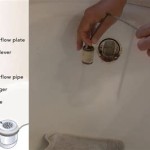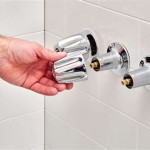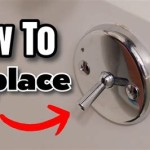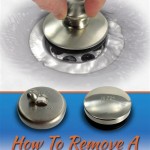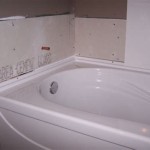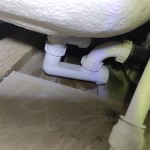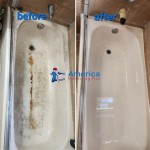How To Get Dirt Off a Bathtub
The bathtub, a sanctuary for relaxation and hygiene, is inevitably subject to the accumulation of dirt, grime, and soap scum. Regular cleaning is essential to maintain its cleanliness and prevent the buildup of stubborn stains that can be difficult to remove. This article provides a comprehensive guide on effectively removing dirt from a bathtub, focusing on various cleaning methods, tools, and preventative measures.
Understanding the Types of Dirt in a Bathtub
Identifying the type of dirt present in the bathtub is crucial for selecting the appropriate cleaning method. The most common types of dirt found in bathtubs include:
Soap Scum: This is a white, chalky residue formed when soap reacts with hard water minerals, such as calcium and magnesium. Soap scum tends to cling to the bathtub's surface, creating a dull and unsightly appearance.
Hard Water Stains: Hard water stains appear as white or yellowish deposits, often around faucets and drain areas. These stains are caused by mineral deposits, which can be challenging to remove without specialized cleaning agents.
Mold and Mildew: Mold and mildew thrive in damp environments like bathtubs. They appear as dark, fuzzy patches or small black dots and can pose health risks if left untreated. Mold and mildew often grow in grout lines and corners where moisture tends to accumulate.
Dirt and Grime: This category includes general dirt, body oils, hair, and other debris that accumulate in the bathtub during regular use. This type of dirt is typically easier to remove than soap scum or hard water stains but requires consistent cleaning.
Essential Cleaning Tools and Supplies
Having the right cleaning tools and supplies readily available is essential for efficient and effective bathtub cleaning. Here's a list of recommended items:
Cleaning Solutions:
- All-Purpose Cleaner: A general-purpose cleaner is suitable for removing everyday dirt and grime. Choose a non-abrasive formula to avoid scratching the bathtub's surface.
- Soap Scum Remover: Specialized soap scum removers contain chemicals that dissolve soap scum effectively. Look for products designed specifically for bathtub surfaces.
- Mold and Mildew Cleaner: For tackling mold and mildew, a cleaner containing bleach or other disinfecting agents is necessary. Ensure proper ventilation when using these products.
- White Vinegar: White vinegar is a natural cleaning agent that can effectively dissolve soap scum and hard water stains. Its acidic properties make it a versatile cleaning solution.
- Baking Soda: Baking soda is a mild abrasive that can be used to scrub away stubborn stains. It's also effective at absorbing odors.
- Hydrogen Peroxide: Hydrogen peroxide is a mild disinfectant and bleaching agent that can help remove stains and kill bacteria.
Cleaning Tools:
- Spray Bottle: A spray bottle is useful for applying cleaning solutions evenly over the bathtub's surface.
- Soft Sponge: A soft sponge is ideal for general cleaning and wiping down the bathtub. Avoid using abrasive sponges, as they can scratch the surface.
- Microfiber Cloth: Microfiber cloths are excellent for polishing and drying the bathtub, leaving it streak-free.
- Scrub Brush: A scrub brush with stiff bristles is helpful for scrubbing away stubborn stains and dirt in grout lines.
- Grout Brush: A smaller brush specifically designed for cleaning grout lines is essential for tackling mold and mildew in those areas.
- Squeegee: A squeegee can be used to remove excess water from the bathtub after cleaning, helping to prevent water spots and soap scum buildup.
- Rubber Gloves: Protect hands from harsh chemicals and hot water by wearing rubber gloves during cleaning.
- Protective Eyewear: When using bleach or other strong chemicals, protect eyes with protective eyewear.
Step-by-Step Cleaning Methods for Various Types of Dirt
The following methods outline effective strategies for cleaning different types of dirt commonly found in bathtubs:
General Dirt and Grime Removal
This method is suitable for routine cleaning of bathtubs that are not heavily soiled.
1. Rinse the Bathtub: Rinse the bathtub with warm water to loosen surface dirt and debris.
2. Apply All-Purpose Cleaner: Spray an all-purpose cleaner evenly over the entire surface of the bathtub, including the walls and floor.
3. Let it Sit: Allow the cleaner to sit for a few minutes to penetrate the dirt and grime.
4. Scrub the Bathtub: Use a soft sponge or microfiber cloth to scrub the bathtub thoroughly. Pay attention to areas where dirt tends to accumulate, such as around the drain and faucet.
5. Rinse Again: Rinse the bathtub thoroughly with warm water to remove all traces of the cleaner.
6. Dry the Bathtub: Use a clean microfiber cloth to dry the bathtub completely. This will help prevent water spots and soap scum buildup.
Soap Scum Removal
Soap scum can be challenging to remove, but the following methods can effectively dissolve and remove it.
Method 1: Using Commercial Soap Scum Remover
1. Apply Soap Scum Remover: Spray a commercial soap scum remover evenly over the affected areas. Follow the manufacturer's instructions for application and dwell time.
2. Scrub the Bathtub: Use a soft sponge or scrub brush to scrub the areas with soap scum. The remover should soften the soap scum, making it easier to remove.
3. Rinse Thoroughly: Rinse the bathtub thoroughly with warm water to remove all traces of the remover and soap scum.
4. Dry the Bathtub: Dry the bathtub with a clean microfiber cloth.
Method 2: Using a Vinegar Solution
1. Prepare Vinegar Solution: Mix equal parts white vinegar and warm water in a spray bottle.
2. Apply Vinegar Solution: Spray the vinegar solution generously over the soap scum areas.
3. Let it Sit: Allow the vinegar solution to sit for 15-30 minutes to dissolve the soap scum. For stubborn soap scum, let it sit longer.
4. Scrub the Bathtub: Scrub the areas with a soft sponge or scrub brush. The vinegar should loosen the soap scum, making it easier to remove.
5. Rinse Thoroughly: Rinse the bathtub thoroughly with warm water.
6. Dry the Bathtub: Dry the bathtub with a clean microfiber cloth.
Hard Water Stain Removal
Hard water stains can be unsightly and difficult to remove. The following methods can help dissolve and remove mineral deposits.
Method 1: Using Vinegar and Baking Soda Paste
1. Prepare Paste: Make a paste of equal parts white vinegar and baking soda.
2. Apply Paste: Apply the paste directly to the hard water stains.
3. Let it Sit: Allow the paste to sit for 30-60 minutes.
4. Scrub the Area: Scrub the area with a soft sponge or scrub brush.
5. Rinse Thoroughly: Rinse the bathtub thoroughly with warm water.
6. Dry the Bathtub: Dry the bathtub with a clean microfiber cloth.
Method 2: Using Commercial Hard Water Stain Remover
1. Apply Remover: Apply a commercial hard water stain remover according to the manufacturer's instructions.
2. Scrub the Area: Scrub the stain with a soft sponge or scrub brush.
3. Rinse Thoroughly: Rinse the bathtub thoroughly with warm water.
4. Dry the Bathtub: Dry the bathtub with a clean microfiber cloth.
Mold and Mildew Removal
Mold and mildew require special attention to prevent their spread and recurrence. Protective eyewear and gloves are recommended when using cleaners containing bleach.
Method 1: Using Bleach Solution
1. Prepare Bleach Solution: Mix one part bleach with ten parts water in a spray bottle.
2. Apply Bleach Solution: Spray the solution onto the mold and mildew affected areas.
3. Let it Sit: Allow the solution to sit for 10-15 minutes. Ensure proper ventilation.
4. Scrub the Area: Scrub the area with a scrub brush or grout brush, focusing on grout lines.
5. Rinse Thoroughly: Rinse the bathtub thoroughly with warm water.
6. Dry the Bathtub: Dry the bathtub with a clean microfiber cloth.
Method 2: Using Hydrogen Peroxide
1. Apply Hydrogen Peroxide: Spray 3% hydrogen peroxide directly onto the mold and mildew.
2. Let it Sit: Allow it to sit for 10-15 minutes.
3. Scrub the Area: Scrub the area with a scrub brush or sponge.
4. Rinse Thoroughly: Rinse the bathtub thoroughly with warm water.
5. Dry the Bathtub: Dry the bathtub with a clean microfiber cloth.
Preventative Measures to Keep the Bathtub Clean
Beyond regular cleaning, adopting preventative measures can significantly reduce dirt buildup and maintain the bathtub's cleanliness.
Rinse After Each Use: Rinse the walls and floor of the bathtub with warm water after each use to remove soap residue and prevent soap scum buildup.
Improve Ventilation: Ensure proper ventilation in the bathroom to reduce moisture levels and prevent mold and mildew growth. Use an exhaust fan during and after showers or baths.
Squeegee After Each Use: Use a squeegee to remove excess water from the bathtub walls and floor after each use. This helps to prevent water spots and mineral deposits.
Use Liquid Soap: Liquid soap tends to create less soap scum than bar soap. Consider switching to liquid soap to reduce soap scum buildup.
Soft Water System: If hard water is a persistent issue, consider installing a water softener to reduce mineral content in the water.
Regular Cleaning Schedule: Establish a regular cleaning schedule to prevent dirt and grime from building up. A weekly cleaning is often sufficient for most bathtubs.

How To Clean A Dirty Tub Quickly

How To Clean Tough Stains From A Bathtub 4 Easy Methods

How To Clean A Dirty Bathtub At Home With Ashley

How To Clean A Dirty Tub Quickly

How To Clean Your Bathtub The Home Depot

Clean With Me Removing Rust Stains From A Bathtub And Marble Best Cleaning Ever

How Do I Take Off Hard Water From My Tub Hometalk

How To Clean Tough Stains From A Bathtub 4 Easy Methods

3 Ways To Get Rid Of Limescale In Bathtubs Vooki

This Weird Bathtub Cleaning Trick Will Save Your Back Knees
Related Posts

